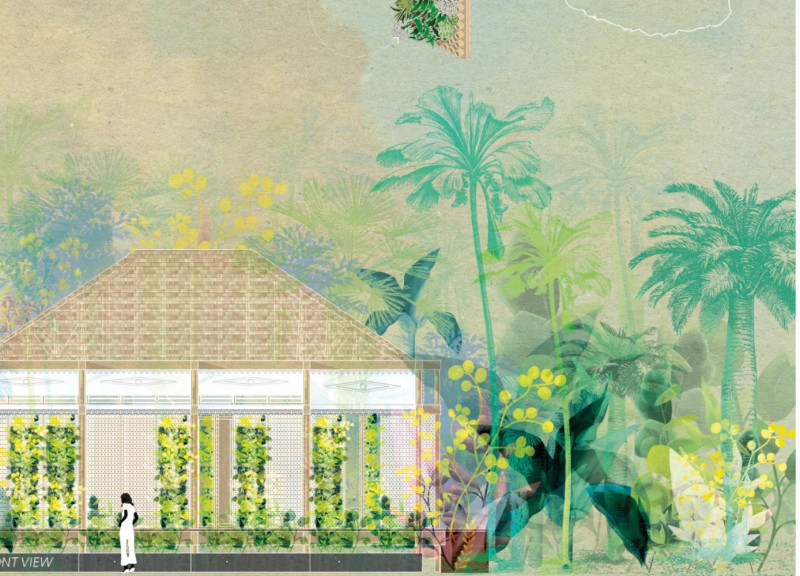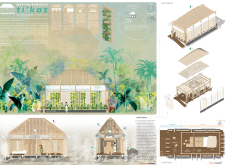5 key facts about this project
One of the core functions of the project is to provide a welcoming community hub. This space facilitates interaction and engagement among individuals and groups, making it a vital part of the neighborhood. The architectural design prioritizes open and flexible areas that can adapt to a range of events, fostering social connectivity. The incorporation of multipurpose rooms showcases a design strategy that accommodates diverse activities, from community meetings to cultural events, thus serving as a cornerstone for local engagement.
The materiality of the building plays a significant role in defining its architectural character. The use of natural materials such as timber, concrete, and glass creates a balance between aesthetics and sustainability. Timber is employed for its warmth and environmental advantages, adding an organic feel to the structure that resonates with users. The concrete elements provide durability and strength, ensuring longevity while establishing a visual contrast that highlights the natural wood finish. Large glass facades invite natural light into the space, creating an inviting atmosphere while also facilitating visual connections to the outdoors. This seamless interaction between interior and exterior environments blurs boundaries, promoting a sense of openness and accessibility.
Unique design approaches manifested in the project include an innovative use of landscaping as part of the architectural framework. The integration of green roofs and terraces not only enhances the building's aesthetic appeal but also contributes to environmental sustainability by managing stormwater runoff and promoting biodiversity. The careful selection of native plant species for landscaping further enhances ecological benefits while requiring minimal maintenance.
The project also prioritizes energy efficiency. A comprehensive approach to the design incorporates advanced technologies such as solar panels and energy-efficient HVAC systems, reflecting a commitment to reducing its carbon footprint. This approach not only fulfills environmental responsibilities but also results in operational cost savings for the community over time.
The architectural layout is characterized by its logical flow, guiding users through the space intuitively. Clear sightlines and strategically placed entry points enhance navigation, ensuring that individuals of all ages and abilities can move through the environment comfortably. This user-centric approach is pivotal in creating a space that feels safe and welcoming.
Particular attention has been given to the relationship between different functional spaces within the project. This careful orchestration of private and public areas allows for both quiet reflections and vibrant communal gatherings. The interplay of these spaces encourages users to experience the building in varied ways, whether through solitude in a landscaped corner or engagement in a dynamic public area.
In summary, this architectural project exemplifies a well-rounded understanding of contemporary design principles, effectively merging aesthetic appeal with practical functionality. Its commitment to sustainability, bidirectional interaction with the environment, and community engagement marks it as a thoughtful contribution to urban architecture. Those interested in delving deeper into the specifics of this project, including architectural plans, sections, designs, and innovative ideas, are encouraged to explore the project presentation for a more comprehensive understanding of its multifaceted nature.























